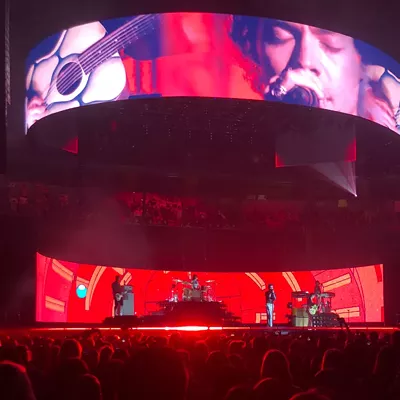Friday, January 15, 2016
Experts analyzing a recent Spokane police shooting come to conflicting conclusions
Spokane Police Officer Chris McMurtrey pulls his patrol car head first into the driveway, facing a pickup with its engine running. The reason he's been called to the house is sitting in the driver's seat.
"Back up. Get to cover," McMurtrey tells other officers on the scene after he gets out of his car. "We got plenty of space, he can't leave. He's gotta plow through my car."
The driver, Jason Smith, begins to rev the engine.
"If he tries to ram through, lethal force," McMurtrey says.
The man rams McMurtrey's patrol car, though he doesn't get very far. The officers start firing as the pickup pushes the patrol car into the street. They stop firing when the truck comes to a rest and command the driver to show his hands. Smith rolls down the window and shows his hands, but the engine continues to rev.
McMurtrey fires one more shot while Smith's hands are still visible.
Warning: graphic violence:
In December, Spokane Sheriff's Detective Tim Ricketts passed his investigation onto prosecutors recommending assault charges for Smith and no criminal charges for the three officers.
In his report, Ricketts wrote that McMurtrey's decision to shoot while Smith's hands were up was justified because of the threat Smith posed to citizens, responding officers and bystanders. Prosecutors have yet to say if they agree with Ricketts' recommendations, but in the meantime, we reached out to a couple former police chiefs to get some outside perspective. Here's what they said:
• Daniel Isom, a retired chief of police in St. Louis, questions McMurtrey's decision to park his car directly in front of the pickup, and says he sees no justification for McMurtrey's final shot while Smith's hands are raised.
“It didn’t appear to me that it was enough of a threat to fire at him,” Isom says. “And if his hands are up, and the car comes to a rest, even if he revs the engine, I just don’t see it. After the car runs into the police car, you would imagine the officers would step back from the situation, and then there’s really no justification for shooting at that point.”
Isom adds that he has the benefit of watching a video, which is different than making a decision in real time.
• Pete Cannon, another former police chief from Missouri, took a different view.
"In my opinion, the shooting was a justifiable shooting," Cannon writes via email. "I was impressed with the immediate medical care given to the suspect by the officer. Had proper care not been given to the suspect, he may have died."
Isom, who spent 24 years in the St. Louis Police Department and is now an endowed professor of policing and the community at the University of Missouri-St. Louis, clarifies that his analysis is based on the immediate threat to officers.
"There needs to be an immediate threat of serious physical injury or death," he says. "It's got to be immediate. If you're standing to the side of a vehicle, and the person has their hands up, even if they drive off, that's not an immediate threat."














